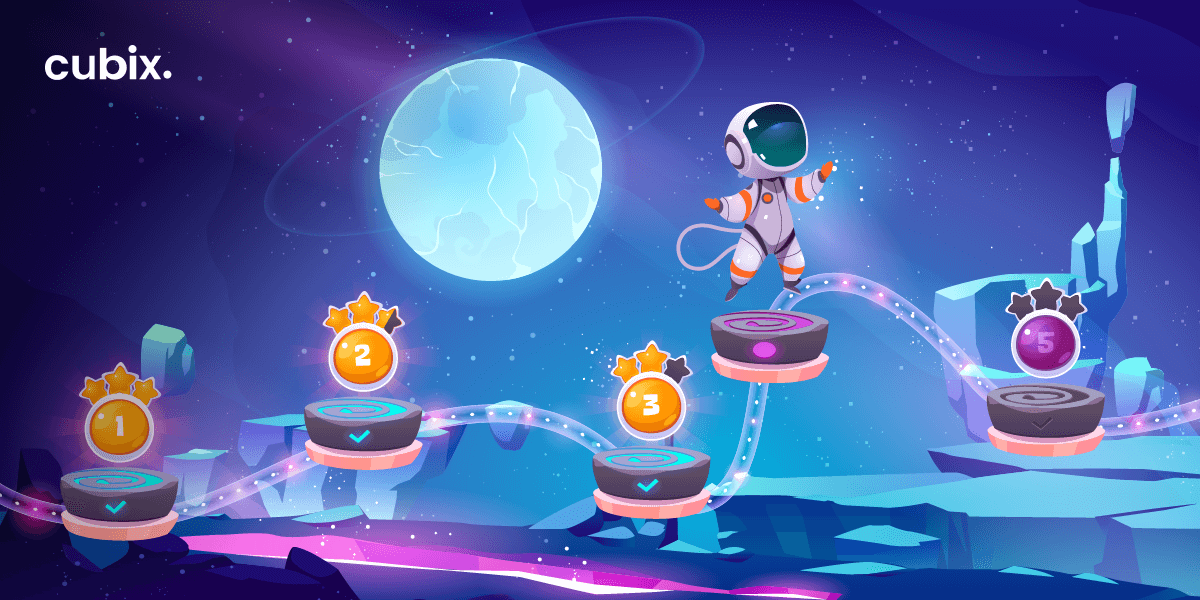What is a Game Level Design?
Game-level design can be well described as the development process of a game that deals with the stages to take the player onto another level of the game. Game-level design, in theory, keeps the thrill and excitement alive by bringing forth the challenge of reaching new levels. However, while dealing with the development process, one should be aware of many major tips that can be quite effective when creating an addictive game. But first, let's take a look at types of game-level designs.
Game-Level Designs
2D Game-Level Design
2D Game-Level Design is a design that is quite affordable and includes only the basic level design process, having limited resources.
3D Game-Level Design
Compared with the 2D Game-Level Design, a 3D Game-Level Design tends to be more complex. It requires more work, more knowledge, and undeniably more tools. In short, not a cup of tea for an indie game development company.
Do Game level design tips differ for each game?
What tips are the most relevant in terms of nailing the design? It comes down to the game’s concept and purpose. Hence, the way you apply the tips differ from game to game. That being said, the tips mentioned in this blog are the ones that would be helpful in most scenarios.
See More: Get Exceptional Video Game-Level Design Services
Why use Game Engines to Design Game-Levels
Game engines have forever been favored by developers for the production of games. Therefore, the reusability of game engines for building frameworks offers great help when designing game levels. Game engines like unreal engine work best with projects that are larger in scale, and in larger-than-life games, it is crucial to create game levels to keep the sense of progression alive. Therefore, gaming engines are essential if you want to design top-notch game levels.
Tips for Game-Level Design
Usage of Weenies or Landmarks
As the name suggests, the weenie term was introduced by Disney Imagineering as an architectural concept. These landmarks are used as visual magnets to get people's attention and direct them in a certain way. These weenies can be seen in amusement parks like Disney World. Similarly, these are used in games as well. These guide players to a certain objective in games so they can maintain their way. A tip for using landmarks in games is that one should make sure that the landmarks are distinctly identifiable and within the players' vision.
Space
This tip has to do a lot with emotions as you want your player to go through some things that can move him from the inside and make him feel things. It's crucial to change the game levels in level design so it is manageable for the player to traverse. Not every part of the game can be filled with tightness, anxiousness, and discovery; it has to be an emotional experience. This is where 'space' comes in. It's a high priority for a developer to use the space for storytelling. For example: if you want to make the player feel empowered and free, you can make the space bigger and wider. While on the other hand, if you want to make the player feel claustrophobic and anxious, you can make the space tighter.
Usage of Shape Language
Shapes are one of the essential parts of game design. A designer can use them as a way of communicating with the player without actually speaking a word. Take the example of round shapes, which are more comforting than triangular shapes. These shapes make the player feel different kinds of things. For example: placing a triangular shape in the level might make a player feel the danger and uneasiness even if there isn't any. The same goes for round shapes. If you want them to feel secure and safe and have breathing room, including such shapes in the atmosphere will make them feel comfortable.
Read More: 13 Benefits of Game Development Outsourcing
Utilizing Positive & Negative Spaces
Positive & negative spaces can be used when a designer wants to guide the player in particular attention, leading them to a specific portion of the level. When we compare both of these spaces, we can see that the Negative space is the kind of space with which the player can only engage, like buildings, props, etc. In comparison, positive space is the space that the player can occupy. By the usage of both of these spaces, we can direct a player to a specific part of the game level.
Affordances
The correct usage of affordances can do wonders for a player. Affordances are another way of communicating with the player without having to say anything. For example, let's take a door. If a player sees the door at a certain level of the game, the first thing that will come to his mind is to open it immediately. This can be used as an advantage to guide the player at the game level. Nonetheless, a designer must be cautious with the placement of Affordances – they must play a part in keeping the player hooked without hurting the game’s overall design.
Rewarding
Now, this part of the game level is necessary, so the player doesn't feel like he's playing for no reason and wasting his time. This is because so many times when levels are being built, a couple of paths are created that the player takes. This tactic tends to manipulate the players' minds, giving them the illusion that they have a choice in the matter. This keeps the player engaged and makes it interesting for them to keep themselves occupied in the game. Making sure to put small rewards after every endeavor's end is a great way to keep the players interested and occupied.
Usage of Verticality
Verticality can be described as freedom of movement. When a player has space to move in any direction in his given surroundings instead of just moving in a straight direction, it gives them more room to be comfortable and empowered. This keeps the players engaged and keeps their interest level up.
Read More: Developing a Car Racing Game: Complete Process Explained
Best Practices for Game-Level Design
Keep it Interesting
Games are supposed to be entertaining. The sole purpose of a game is to make the player forget about the rest of life for the time being. A developer needs to keep this practice in mind that the game needs to be fun and interactive, captivating and addictive too. Doing your best when designing the levels is one of the surest ways to make the game fun and entertaining.
Keep the Curiosity Alive
Keeping the curiosity alive will have the player wanting more. Therefore, every level should be designed to leave the player with questions and an urge to reach another level for the answers to unfold. Of course, it's okay to give players all of the answers. However, leaving them with questions will boost their curiosity and lead them to play more.
Environment and View
Let's get one thing straight; the player isn't coming to get bored. While you keep the aspects mentioned earlier in mind, another thing that needs to be taken care of is the scenery, atmosphere, environment, and view that your game levels should possess. Putting objects that look the same after every level will become dull for your player. Even if you want to put the same objects on different levels, try to change their outlook a bit so that it looks different every time your player reaches another level.
Read More: NFT Game Development Checklist: A Complete Guide
Ready to Design Your Game Levels with Cubix?
These Game Level Design Tips will surely set your direction right, and once you implement these, you will observe the improvement. But if you want your game to be a hit, you need expert designers and developers.
Cubix has been in the game development industry for quite a long time, and there is no exaggeration in saying that Cubix has cemented its place with quite a dominance in the field. Furthermore, the team of developers at Cubix are well experienced in their line of work and have quite some skills regarding game development. Making productive use of the given set of tools, the team has produced some of the best results in terms of games and has always sent the clients with a smile on their faces. So, if you're looking to get your game-level designs ready, Cubix is the place for you.

